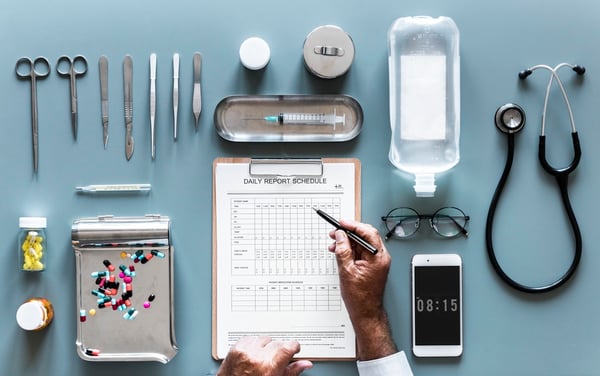Telemedicine continues to grow as a solution to improve access to quality healthcare. Patients living in rural areas stand to gain immense benefits from telehealth because it can reduce barriers related to cost and travel. A recent study sought to demonstrate the efficacy of telehealth in reducing the problems with access to healthcare for patients with diabetes living in rural Georgia and Alabama.
Reaching Underserved Patients
As the prevalence of chronic diseases continues to rise, patients all over the country will require specialized healthcare. Diabetes in particular has increased the need for specialty healthcare services in the United States. Diabetes affects 29.1 million Americans, which is 9.3% of the population, yet there is a shortage of endocrinologists in the US. This gap in care can be solved with telehealth solutions.
The US Veterans Health Administration has recognized the promising potential of telehealth to improve access to healthcare for veterans living in rural areas of the country. In 2014, the Atlanta Veterans Affairs Medical (VAMC) Endocrinology Telehealth Clinic was established to improve access to care for patients with type 1 diabetes in the Central Alabama Veterans Health Care System (CAVHCS). The CAVHCS serves over 134,000 patients in rural regions of Alabama and Georgia but does not have an endocrinologist locally on staff. Prior to implementing telehealth, CAVHCS patients would have to travel to Birmingham or Atlanta to receive specialty care.
A Telehealth Program for Diabetes Management
A recent study examined the influence of the Atlanta VAMC Endocrinology Telehealth Clinic on diabetes outcomes for patients with type 1 diabetes. The patients in the study lived in rural regions of Alabama and Georgia and received remote endocrinology care from Atlanta-based endocrinologists.
Patients who participated in the telehealth program traveled to their local outpatient clinics for clinical video consultations from an Atlanta-based endocrinologist. During the visits, they also had their vitals checked and received assistance from a telehealth pharmacist.
The study authors collected data via a retrospective chart review of patients who were enrolled in the Atlanta VAMC Endocrinology Telehealth Clinic from June 2014 to October 2015. The researchers specifically looked at the following outcomes:
-
Hemoglobin A1c levels
-
Changes in glycemic control
-
Time savings for patients
-
Cost savings for the US Veterans Health Administration
-
Appointment adherence rates
-
Patient satisfaction with telehealth
Improving Patient Outcomes

The authors found that patients experienced an overall decrease in mean hemoglobin A1c and glucose variability, but the changes were not significant. Mean hemoglobin A1c decreased from baseline (8.7%) to 6 months (8.2%) and 12 months (8.1%) follow-up.
The authors also observed a non-significant increase in average frequency of hypoglycemia, which can be explained by the fact that improved glycemic control and lower hemoglobin A1c is often correlated with increased instances of hypoglycemia.
Additionally, the authors saw that the average frequency of hyperglycemia increased at 6 months but stabilized at 12 months.
And finally, there was a non-significant decrease in mean 2-week blood glucose levels at 6 months and 12 months follow-up.
Improving the Patient Experience
The authors observed substantial improvements with regards to travel time and expenses. Patients saved an average of 78 minutes of travel time and the VA saved a median of $72.94 in travel reimbursement costs per patient. The authors noted that this is a considerable cost savings because “if Atlanta VAMC Endocrinology Telehealth patients received follow-up every 3 months as recommended, each patient would save 624 minutes of traveling time per year, which corresponds with VHA savings of $9,336.32 per year in reimbursements to the 32 patients with type 1 diabetes.”
Patients also demonstrated excellent adherence to the telehealth program. Patients had an 88% adherence rate for scheduled telehealth appointments and at least half of patients attended 100% of their appointments.
Lastly, patient satisfaction levels were high. 100% of patients surveyed agreed or strongly agreed that they were satisfied with the telehealth services. 90.9% of patients strongly agreed with the statement that they would recommend telehealth to other veterans and 90.9% agreed or strongly agreed that they would prefer telehealth as opposed to traveling long distances to see a provider.
Improving Access to Healthcare with Telehealth
Overall the authors concluded that specialty diabetes care delivered with telemedicine is safe, and results in cost efficiency, time savings, and high patient adherence and satisfaction. Although the findings related to clinical outcomes were not significant, the telehealth patients did overall experience improvements related to their condition.
One of the most noteworthy implications of this study was the power to improve the access to healthcare for patients living in rural areas. The patients in the study had greater access to healthcare because of the telehealth program. Additionally, the cost savings and improved quality of life due to decreased travel time are of great benefit to patients living in rural areas of the country.
Telehealth is quickly proving to be one of the best ways to improve access to healthcare, and with results like these, it’s easy to see why increasing access to care is so important.
References:
Xu T, Pujara S, Sutton S, Rhee M. Telemedicine in the Management of Type 1 Diabetes. Prev Chronic Dis. 2018 Jan 25;15:E13.
